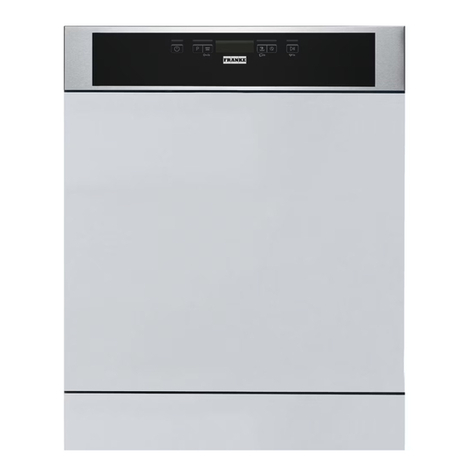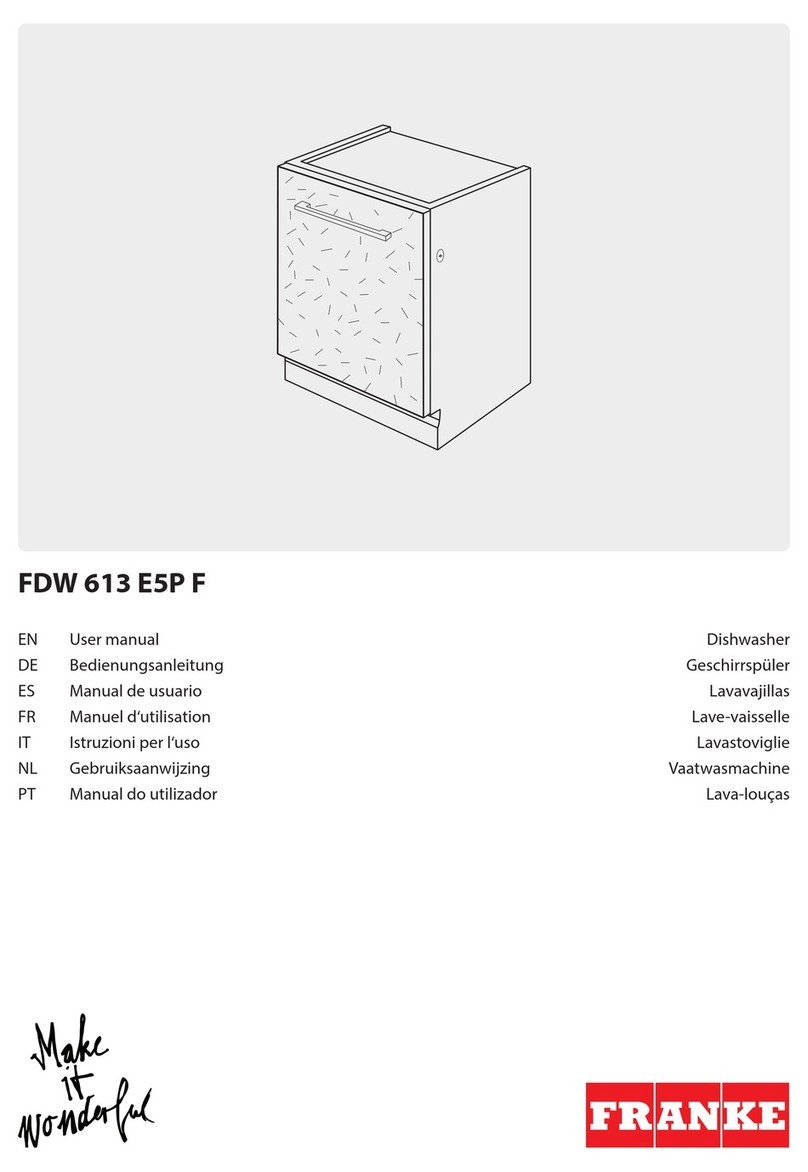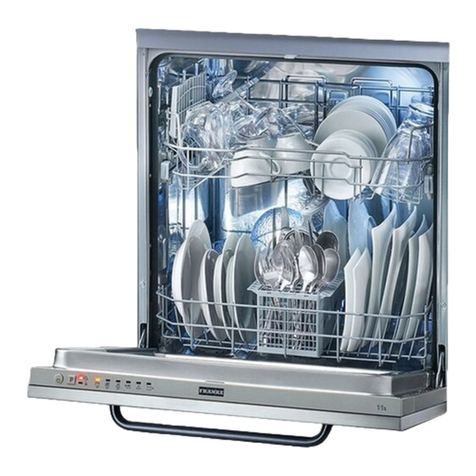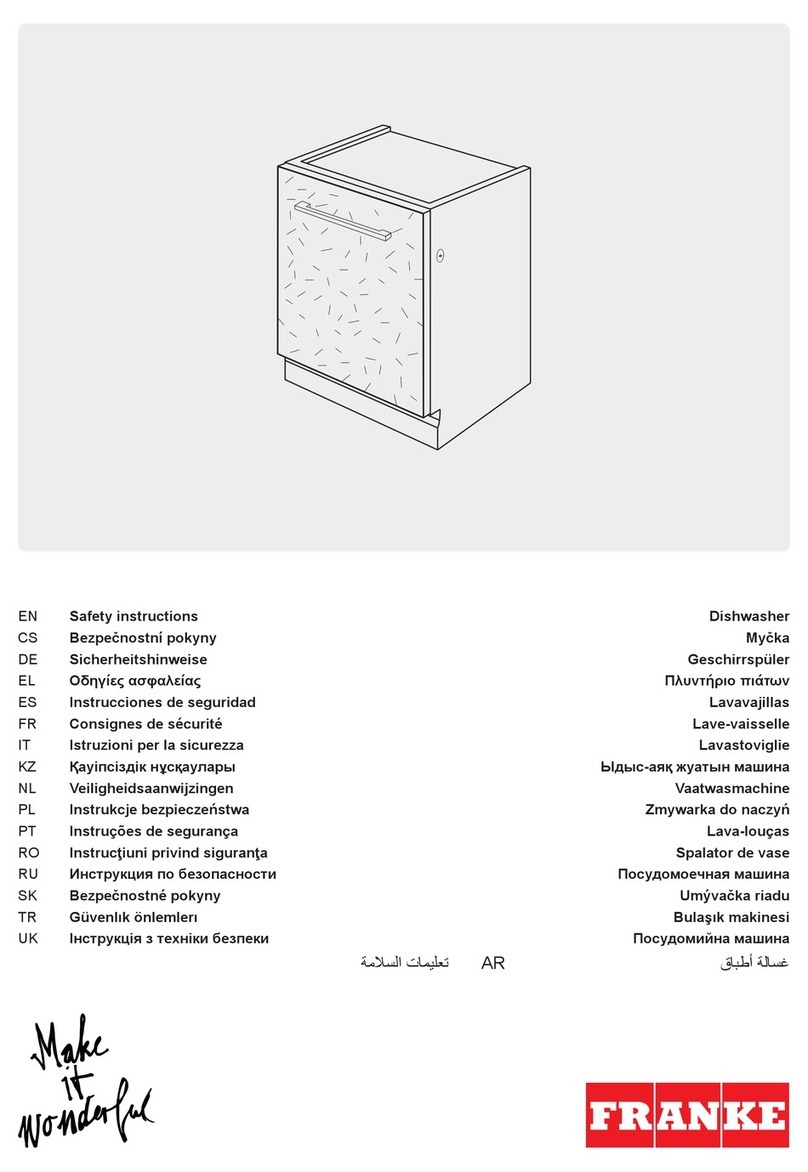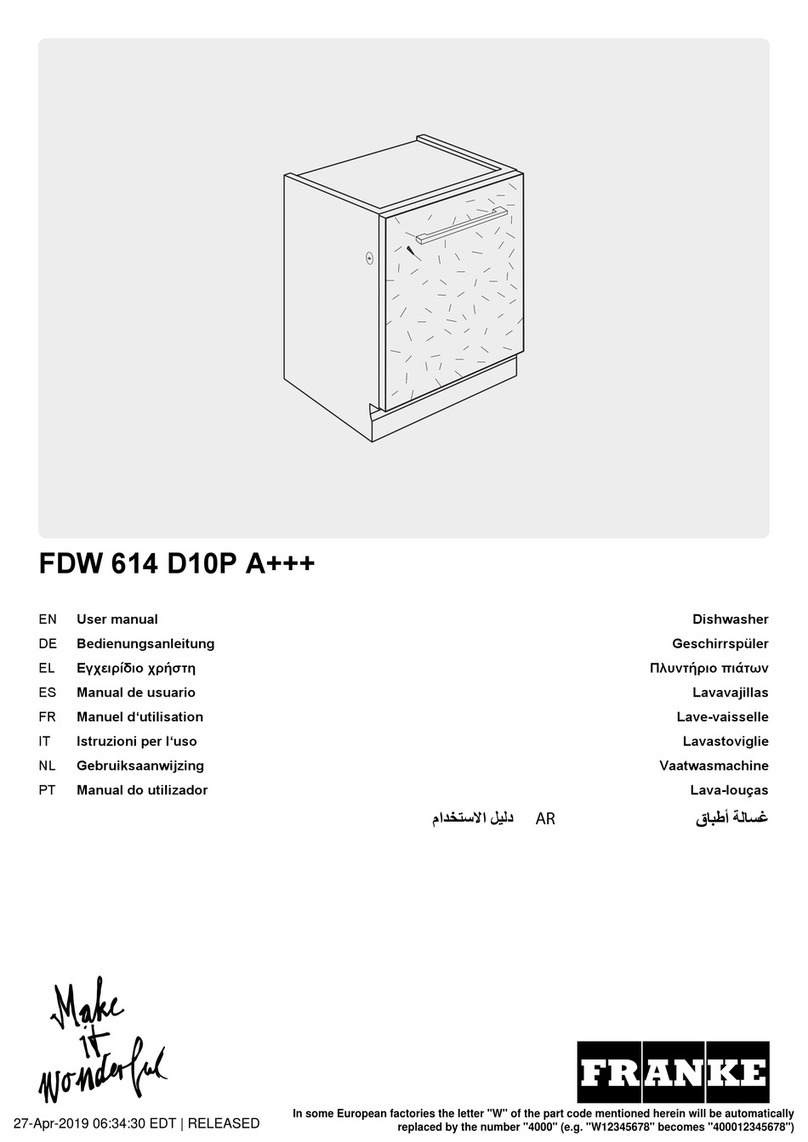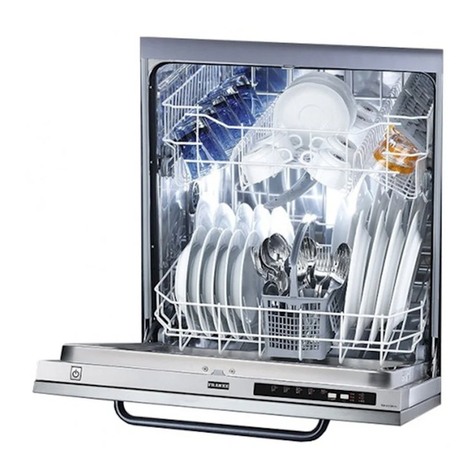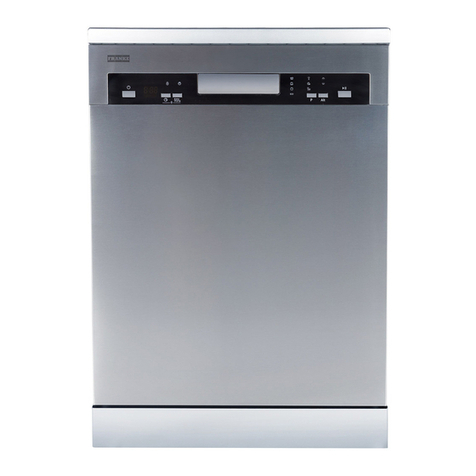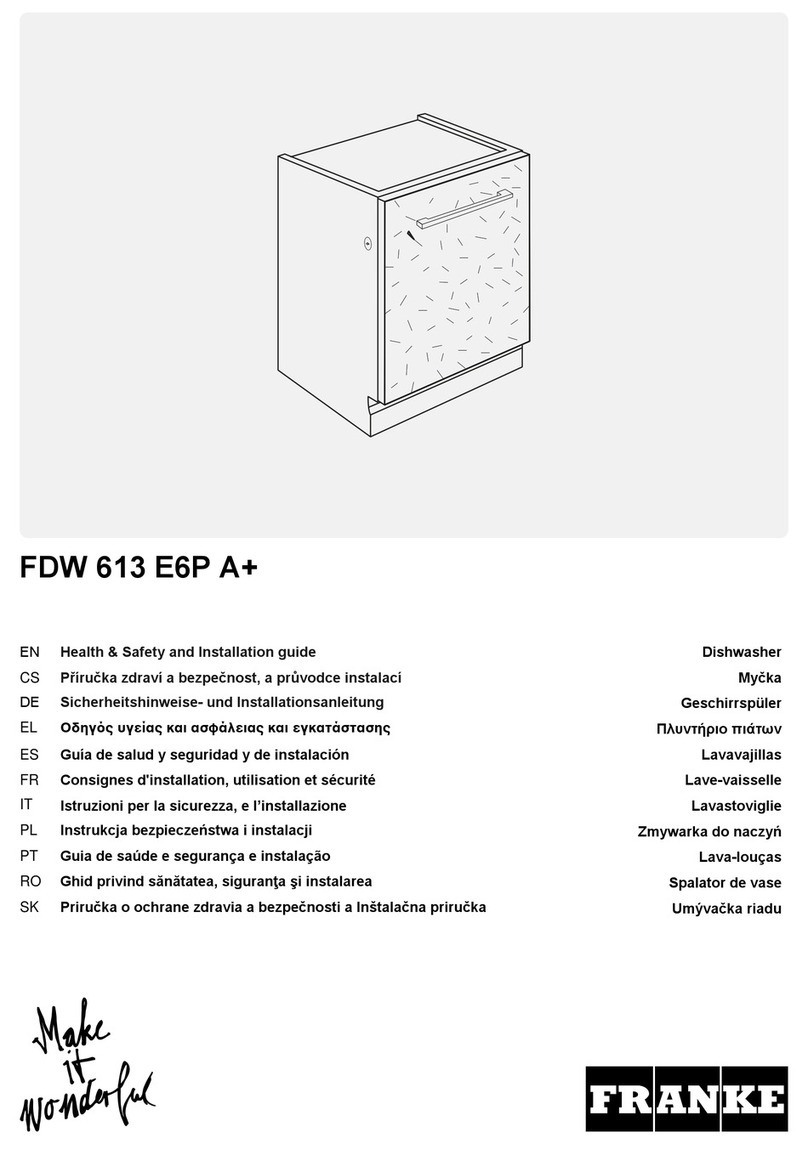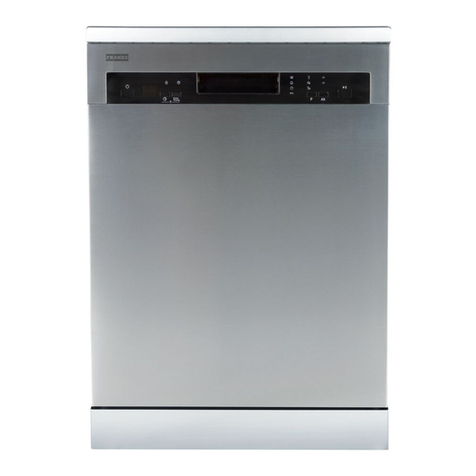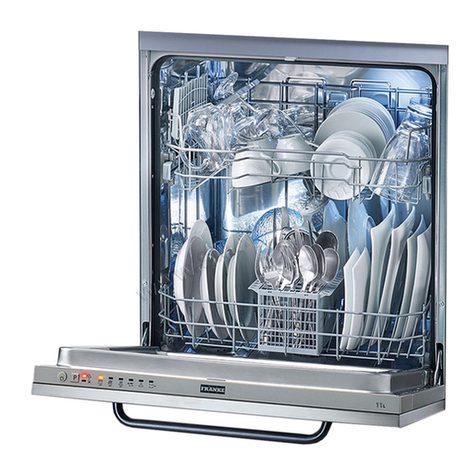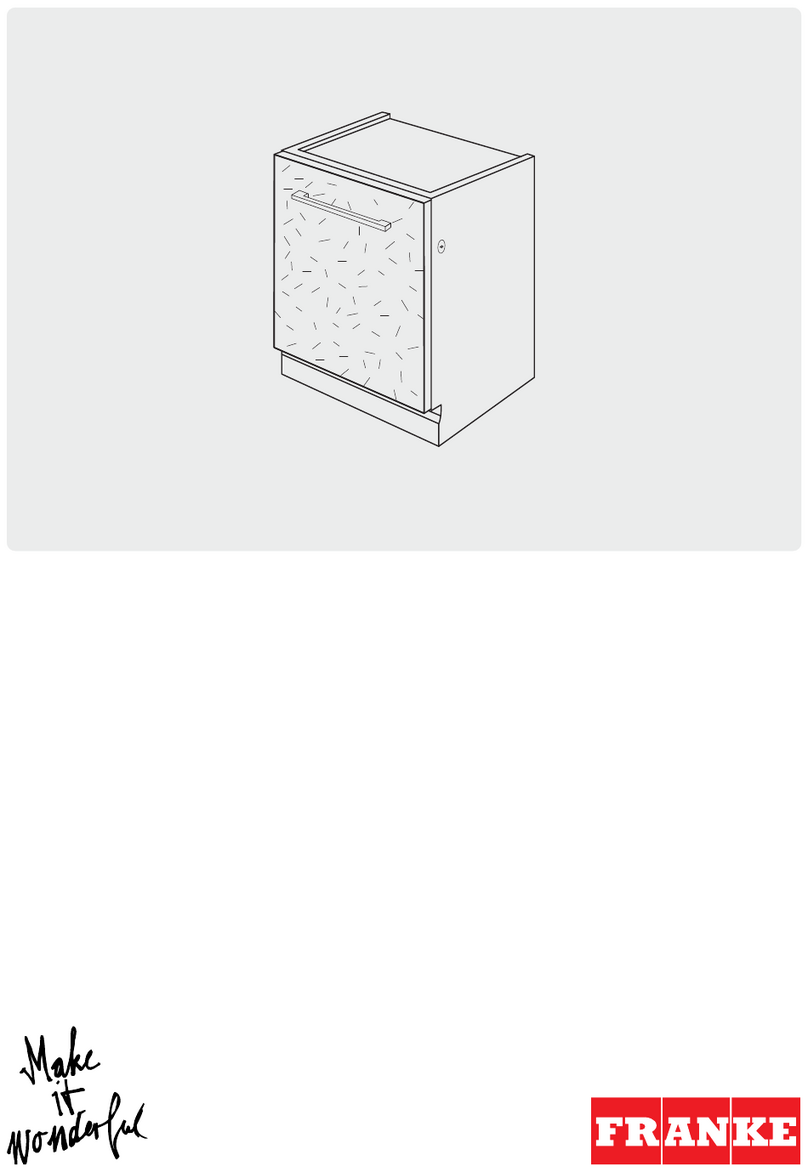
9
EN
DAILY USE
1. CHECK WATER CONNECTION
Check that the dishwasher is connected to the water supply
and that the tap is open.
2. SWITCH ON THE DISHWASHER
Open the door and press the ON/OFF button.
3. LOAD THE RACKS (see LOADING THE RACKS)
4. FILLING THE DETERGENT DISPENSER
5. CHOOSE THE PROGRAM AND CUSTOMISE THE CYCLE
Select the most appropriate program in accordance with the type
of crockery and its soiling level (see PROGRAMS DESCRIPTION)
by pressing the P button.
Select the desired options (see OPTIONS AND FUNCTIONS).
6. START
Start the wash cycle by pressing START/Pause button (led is lit)
and closing the door within 4 sec. When the program starts
you hear a single beep. If the door was not closed within 4sec.,
the alarm sound will be played. In this case, open the door, press
START/Pause button and close the door again within 4 sec.
7. END OF WASH CYCLE
The end of the wash cycle is indicated by beeps and by the ashing
of the wash cycle number on the display.
.
Open the door
and switch o the appliance by pressing the ON/OFF button.
Wait for a few minutes before removing the crockery - to avoid
burns. Unload the racks, beginning with the lower one.
The machine will switch o automatically during certain extended
periods of inactivity, in order to minimise electricity consumption.
If the crockery is only lightly soiled or if it has been rinsed with
water before being placed in the dishwasher, reduce the amount
of detergent used accordingly.
.........................................................................
MODIFYING A RUNNING PROGRAM
If a wrong program was selected, it is possible to change it, provided
that it has only just begun: open the door, press and hold the ON/OFF
button, the machine will switch o.
Switch the machine back on using the ON/OFF button and select
the new wash cycle and any desired options; Start the wash cycle
by pressing START/Pause button and closing the door within 4 sec.
.........................................................................
ADDING EXTRA CROCKERY
Without switching o the machine, open the door (START/Pause
led starts blinking) (be ware of HOT steam!) and place the crock-
ery inside the dishwasher. Press the START/Pause button and close
the door within
4 sec., the cycle will resume from the point at which
it was interrupted.
..........................................................................
ACCIDENTAL INTERRUPTIONS
If the door is opened during the wash cycle, or if there is a power cut,
the cycle stops. Press the START/Pause button and close the door
within
4 sec., the cycle will resume from the point at which it was
interrupted.
ADVICE AND TIPS
TIPS
Before loading the baskets, remove all food residues from the crockery
and empty the glasses. You do not need to rinse beforehand under
running water.
Arrange the crockery so that it is held in place rmly and does not tip
over; and arrange the containers with the openings facing downwards
and the concave/convex parts placed obliquely, thus allowing the water
to reach every surface and ow freely.
Warning: lids, handles, trays and frying pans do not prevent the sprayer
arms from rotating.
Place any small items in the cutlery basket.
Very soiled dishes and pans should be placed in the lower basket
because in this sector the water sprays are stronger and allow a higher
washing performance.
After loading the appliance, make sure that the sprayer arms can rotate freely.
.........................................................................
TIPS ON ENERGY SAVING
• When the household dishwasher is used according
to the manufacturer’s instructions, washing tableware
in a dishwasher usually consumes less energy and water than
hand dishwashing.
• In order to maximize dishwasher eciency it is recommended
to initiate the wash cycle once dishwasher is fully loaded.
Loading the household dishwasher up to the capacity indicated
by the manufacturer will contribute to energy and water savings.
Information on correct loading of tableware can be found in Loading
chapter.
In case of partial loading it is recommended to use dedicated wash
options if available (Half load/ Zone Wash, Multizone), illing up only
selected racks. Incorrect loading or overloading the dishwasher may
increase resources usage (such as water, energy and time, as well
as increase noise level), reducing cleaning and drying performance.
• Manual pre-rinsing of tableware items leads to increased water
and energy consumption and is not recommended.
HYGIENE
To avoid odour and sediment which can be accumulated
in the dishwasher please run a high temperature program at least
one a month. Use a tea spoon of detergent and run it without
the loading to clean your appliance.
.........................................................................
UNSUITABLE CROCKERY
Items which are not dishwasher-safe:
• Wooden dishes, pots or pans: these may be damaged by the high
washing temperatures.
• Handcrafted items: these are rarely suitable for washing
in a dishwasher. The relatively high water temperatures
and the detergents used may damage them.
• Plastic dishes: these are not heat resistant and may lose their shape.
Heat resistant plastic dishes must be washed in the upper basket.
• Dishes and objects in copper, tin, zinc or brass: these tend to stain.
• Aluminium dishes: items made from anodised aluminium may lose
their colour.
• Silverware: silver items may stain.
• Glass and crystal: in general, glass and crystal objects can be washed
in the dishwasher. However, certain types of glass and crystal may become
dull and lose their clearness after many washings. Therefore, for these
items we recommend using the least aggressive program available.
• Decorated items: the decorated objects available on the market are
generally able to withstand washing in the dishwasher, although
the colours may fade after a great many washes. If in doubt
as to the fastness of the colours, it is advisable to wash just a few
items at a time for approximately one month.
.........................................................................
DAMAGE TO GLASS AND CROCKERY
• Only use glasses and porcelain guaranteed by the manufacturer
as dishwasher safe.
• Use a delicate detergent suitable for crockery
• Collect glasses and cutlery from the dishwasher as soon as the wash
cycle is over.

